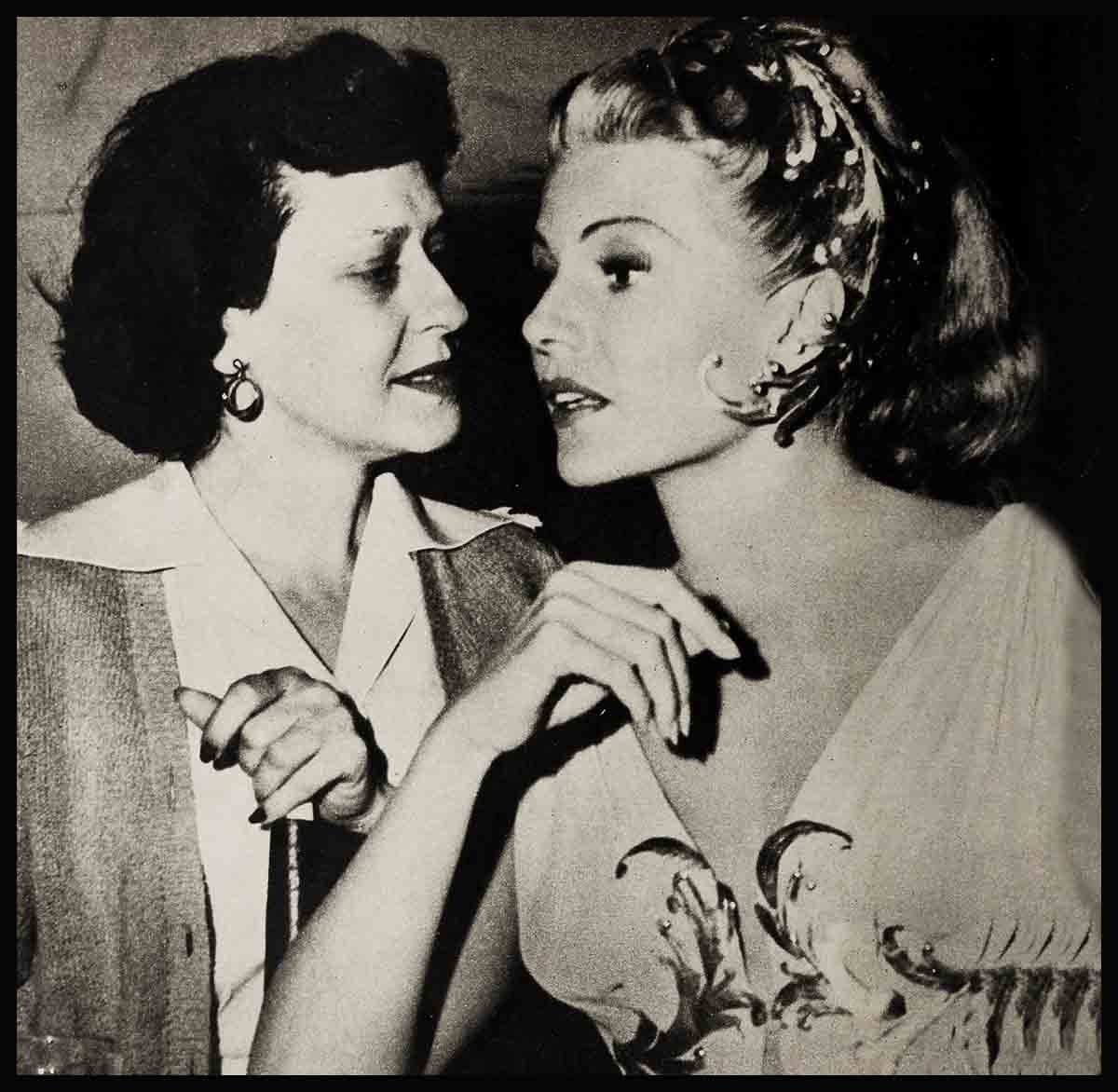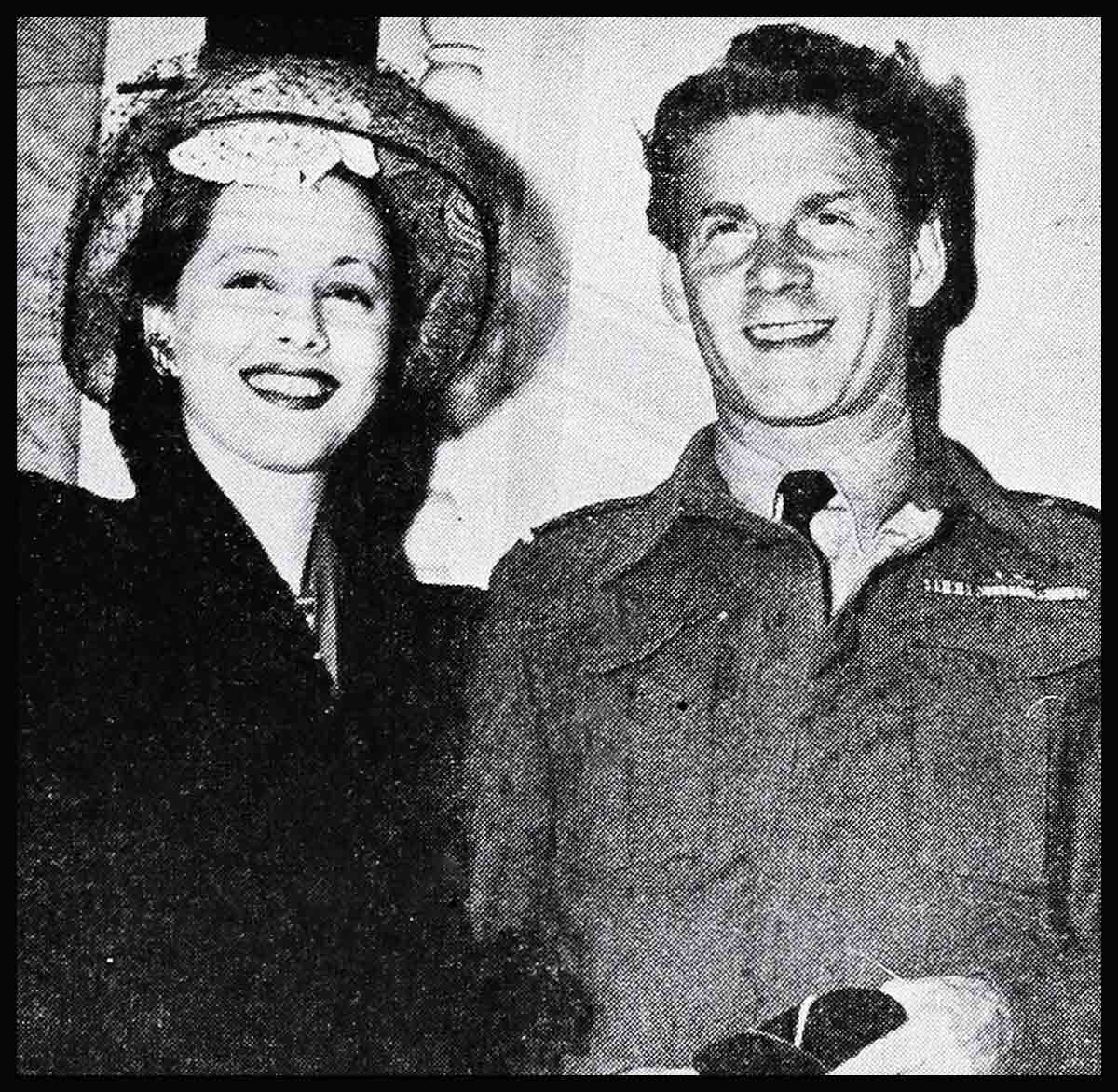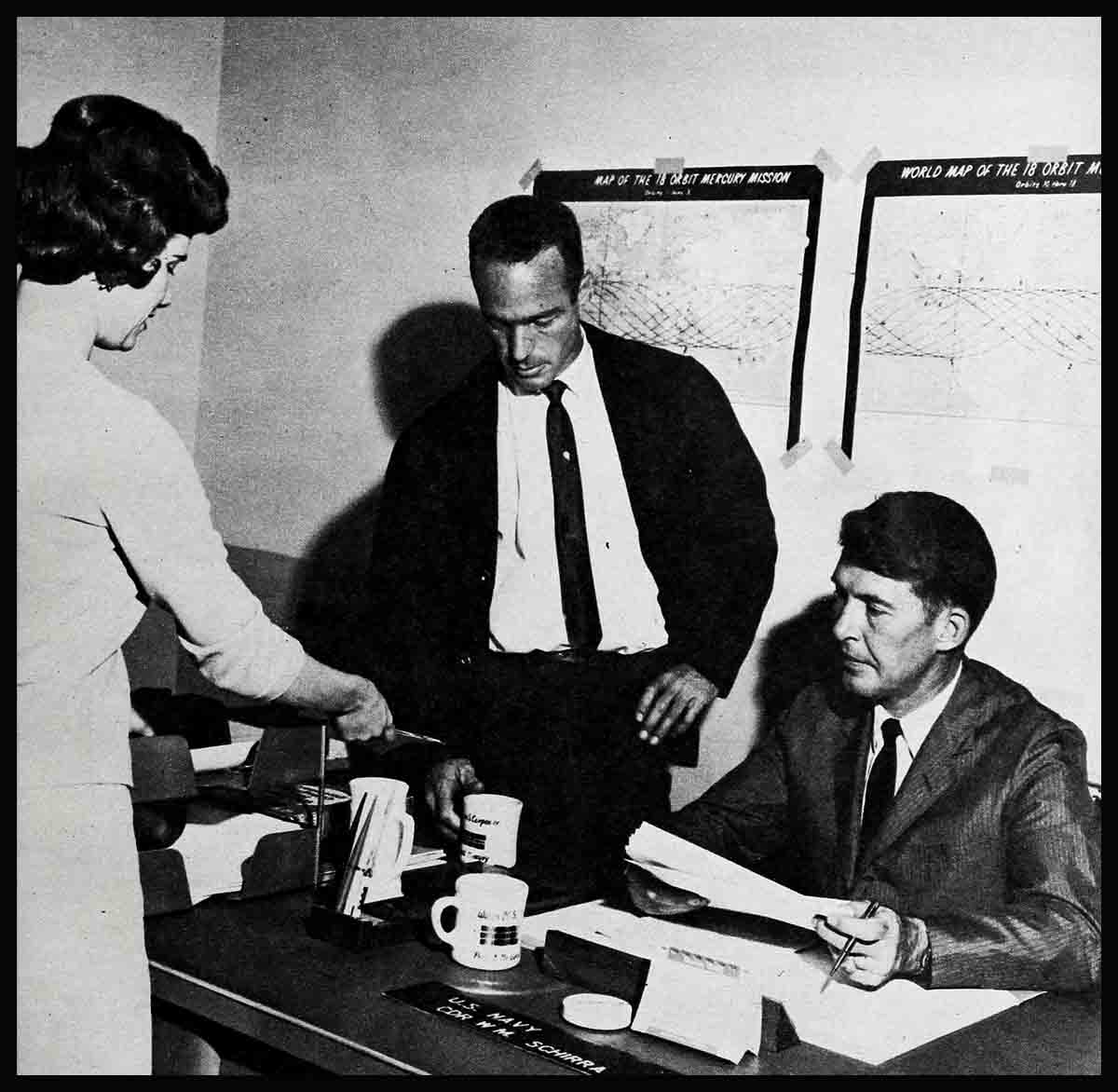
I Work For Rita Hayworth!
I first met Rita two years ago when she came back from Europe after her separation from Aly Khan. All I knew about her was what I’d read in the papers.
When I walked up to her suite at the Beverly Hills Hotel, I expected anything but what I found—a quiet, sincere, warm-hearted person, as unaffected as my neighbor next door.
We went to the coffee shop below for a hamburger, a milkshake and a chat. From the very beginning I felt at ease. I have ever since.
Rita proved to be an easy employer, for two reasons: She knows what she wants, and once she gives you instructions, leaves you on your own. Whether it is a letter that has to be answered or a party to be arranged, she won’t interfere or criticize, unless she has a very good reason. There’s never any haggling, indecision, uncertainty.
During the two years I’ve been working for—I should say with—Rita, I’ve been amazed by the strange contrasts that make up Rita: Glamour and simplicity. Public life and longing for complete privacy. Depressive moods and a down-to-earth sense of humor. A fiery personality and an ability to control her temper, no matter what happens.
Rita has been in public life a long time and prominently. Yet I’ve never met anyone who yearns so much for privacy.
When Rita is working, her social life is almost non-existent. But even between pictures, she prefers to stay home and play with Rebecca, who’s eight now, and Yasmine, who’ll soon be three, read, or listen to her vast record collection.

She doesn’t like to go to parties or other official functions, for once she steps out of her house, every move, every word of conversation is promptly reported and repeated.
When she goes to a restaurant, Rita picks out the least conspicuous table, will never call noisily for the waiter or demand any special attention. Moreover, she picks quiet, out of the way places, not only because she likes privacy, but also because she prefers plain American food to fancy foreign dishes.
I believe that during the time I’ve known Rita, more has been written about her than about any other actress in Hollywood. If she (or I) had kept track of all the columns and articles, we could easily fill the den of the new house. Yet Rita neither reads a gossip item, nor keeps a scrapbook. She secludes herself completely from any news that may hurt her—or the girls.
Until a short time ago, Rita lived in a rented fourteen room, furnished house in Beverly Hills. When she bought her new home, she had to furnish it from scratch—starting with the essentials, such as cooking utensils, stove, refrigerator, etc.
Anyone who has looked at the glamour pictures of Rita in the magazines would be in for a surprise to see her searching for bargains in the daily paper, on sales, or in quaint little bazaars in far off places.
Rita can be quite bargain minded. More than one morning I’ve rushed into her room, a newspaper ad in my hand. “I just saw the most marvelous furniture sale advertised . . .”
“On the back page of the second section,” Rita would cut in. “Not bad . . .”
We had both thumbed through the paper and found the identical item. But more often than not, “bargains” turn into booby traps—with spindly-legged, outdated furniture, or else used as a means of luring you into the place for “Bigger and better buys.” Rita knows a bargain when she sees it. She also knows when a bargain isn’t a bargain.
Likewise, Rita has a weakness for auctions. When she doesn’t work, we often go to the Beverly Hills shops to look for home furnishings.
She’s good at bidding, so good that once when we stopped at a quaint little bazaar in Spain, Rita bought a pottery jar for a third of the asking price.
When she is in a picture, as she is now in “Miss Sadie Thompson” at Columbia, I get up at five to be at her house by six, and at the studio by seven.

Often I join her for breakfast before we leave her house. Rita’s appetite—when working—has never ceased to amaze me. Unlike many women in careers, Rita eats breakfast when she is working. The reason is that she finds she must have a vast supply of energy to get through her working day which begins somewhere around 6 a.m. and ends, more often than not, 12 to 14 hours later. Breakfast, hot and hearty, and a substantial lunch are necessary, particularly when she is dancing several hours during the day. Dinner for this working woman is frequently served to her on a tray after she goes up to her room to bed.
When she’s not in a picture—and not burning up so much energy—she usually settles for two small meals—brunch and early dinner.
Once she arrives at the studio, Rita turns into another person. Her casual air is gone, she is concentrated, conscientious and intense on the job.
I’ve watched her getting ready—in hairdressing, in makeup, in the wardrobe department. I’ve noted her tenseness as she goes over her lines, works out the last details of a dance number and then, as the camera begins turning, she is completely relaxed.
Rita is very popular at the studio because she takes direction without arguing, is sincere, and doesn’t throw her weight around. She is conscientious about her work to the point of getting into trouble with the law.
Early one morning, during the filming of “Salome” and just before she bought her new Ford, we were driving to Columbia Studios in the old sedan, vintage of 1939, belonging to Rita’s handyman. In danger of being late, and not wanting to hold up production, Rita broke the speed limit on Sunset Boulevard till the sound of a police siren forced us to a halt.
A tall, brusque-looking officer with that dreadful little book in his hand jumped out of his car, walked over to us, and put his foot on our running-board. “Do you know how fast you were going, lady?” he barked.
Rita, uncomfortable, said, “No, I’m sorry. You see, I’m late for an early call.” She sounded resigned to her fate. “I guess I deserve a ticket . . .”
Surprised, the cop looked up—and recognized her. “You’re Rita Hayworth!” He continued to stand, the little book in his hand.
“Well,” Rita said, after the silence became acute, “come on, the ticket, please. You finish your work so I can go start mine.”
Muttering that he hated to do it, he wrote the ticket. Then Rita, because she’s like that, took the slip of paper and said, “Ever been on a studio lot?” He hadn’t. That morning he was the guest of Miss Hayworth at the open air coffee stand at Columbia. I’m sure he never tasted the two doughnuts he ate.
Rita’s knack for getting along with people is part of her success. At work, she insists on the same crew for each picture. They, in turn, work twice as hard to make Rita come off best. At home, the nurse, cook and housekeeper wouldn’t change jobs for twice the money—I think.
Although she is one of Hollywood’s top stars, Rita isn’t afraid to work with her hands—whether sweeping a floor at home, unpacking baggage because I got sick on a train, or (unsuccessfully) trying to change a tire when the situation calls for it.
Many people envy Rita. Others feel sorry for her.
I do neither. Because today she is a beautiful woman with two lovely, healthy children, has a thriving career and the admiration of many thousands of fans. What more could she ask?
THE END
—BY MARGARET PARKER
It is a quote. SCREENLAND MAGAZINE JULY 1953





No Comments